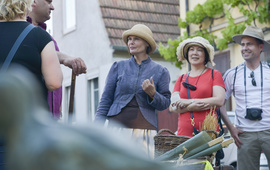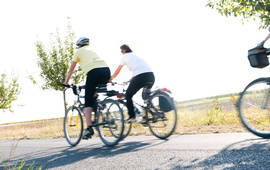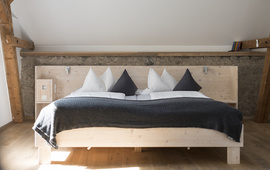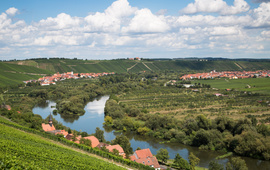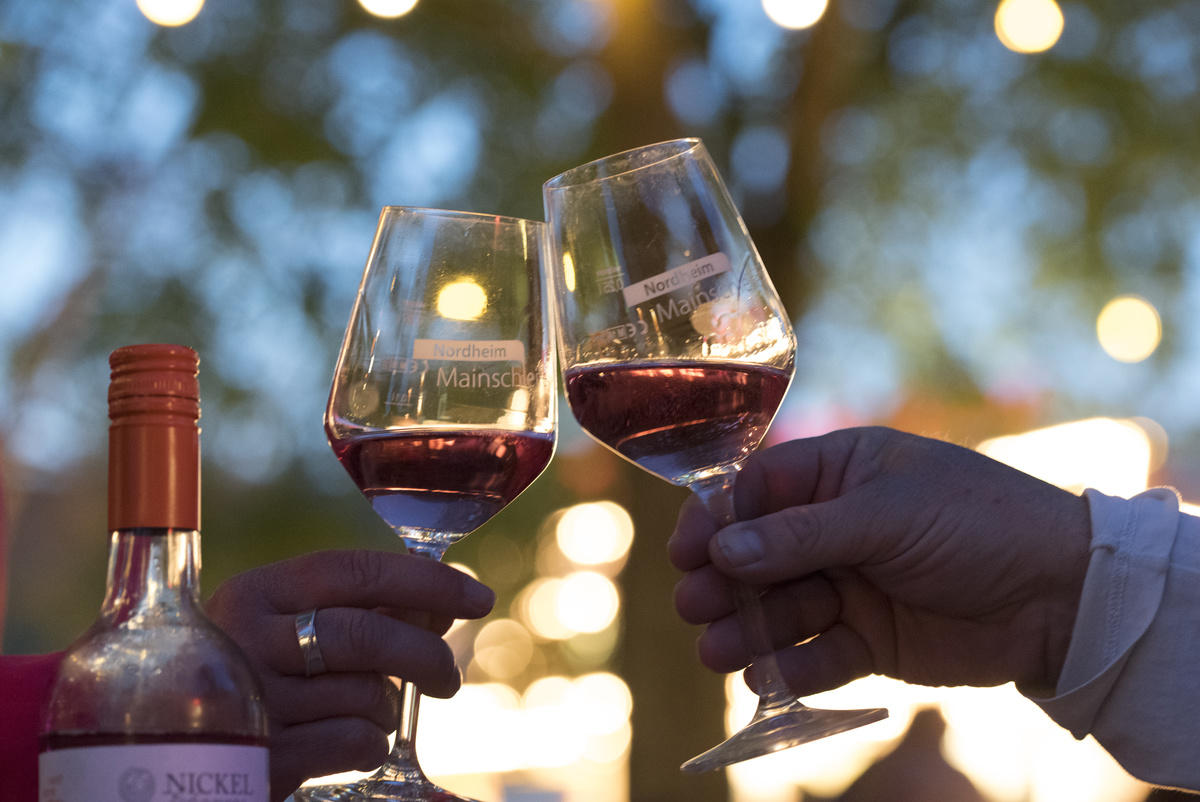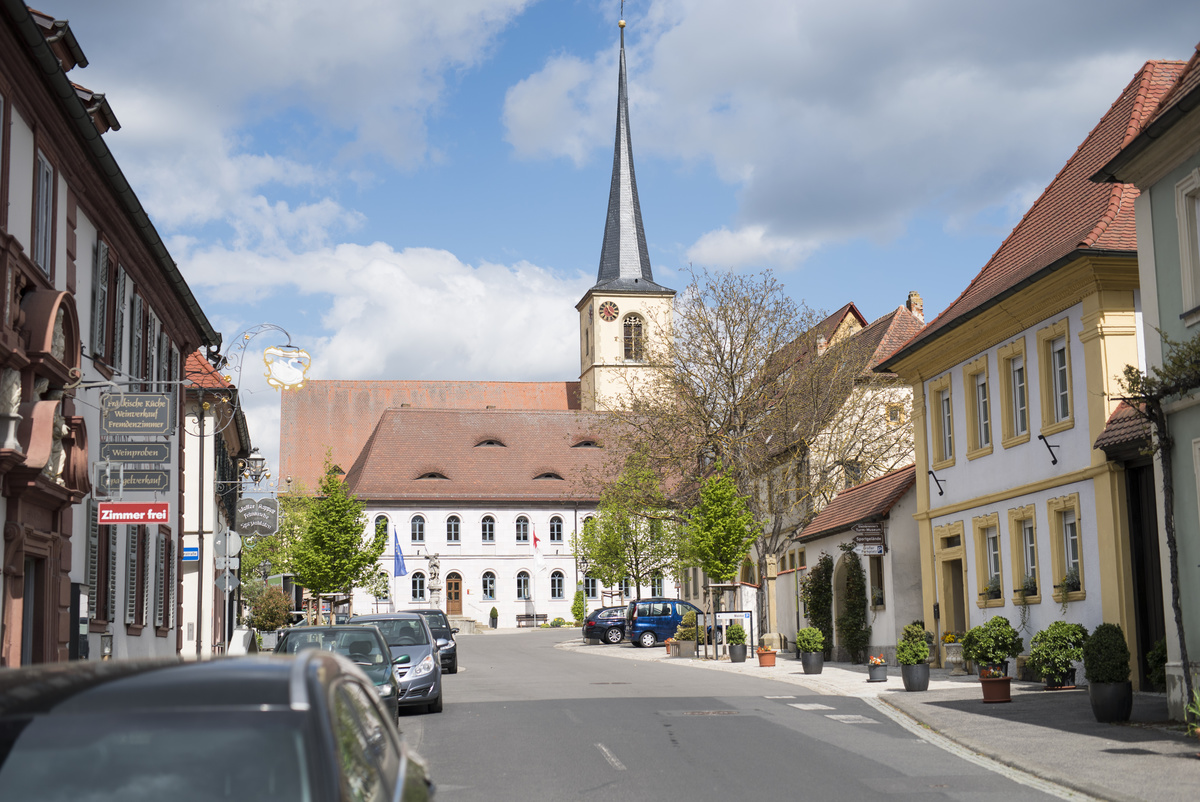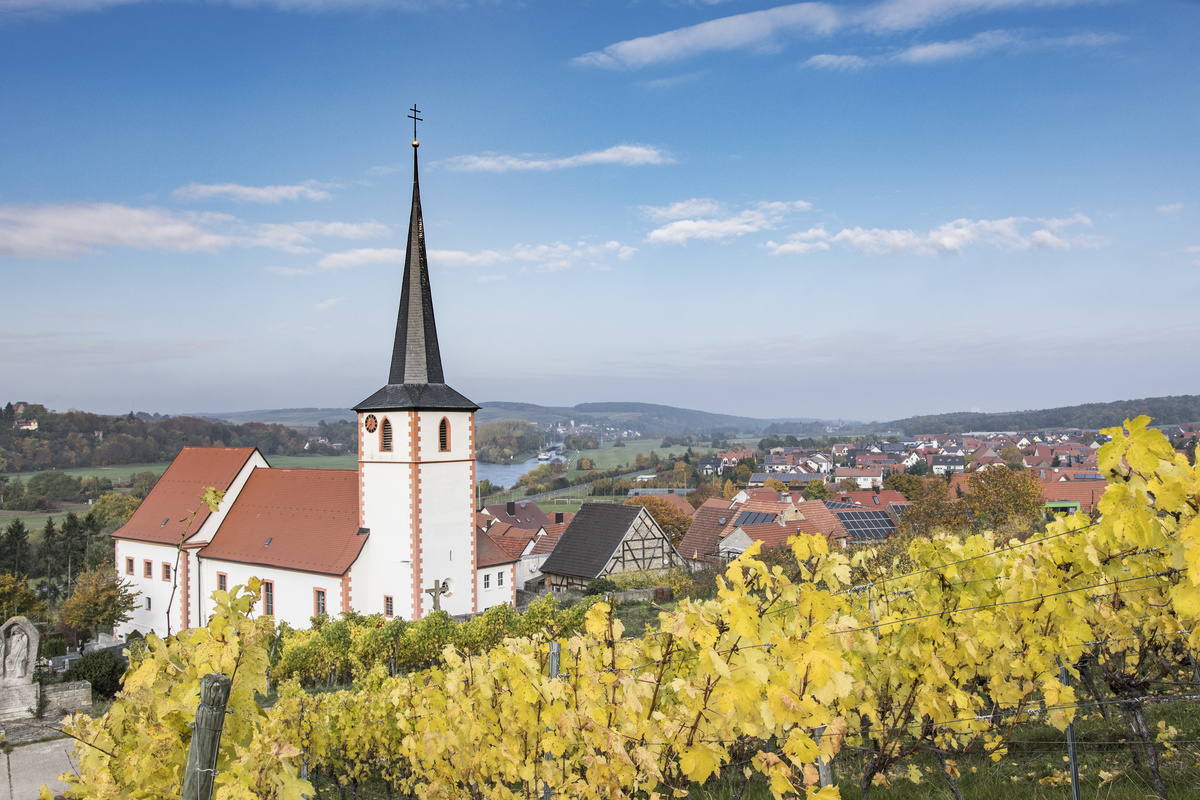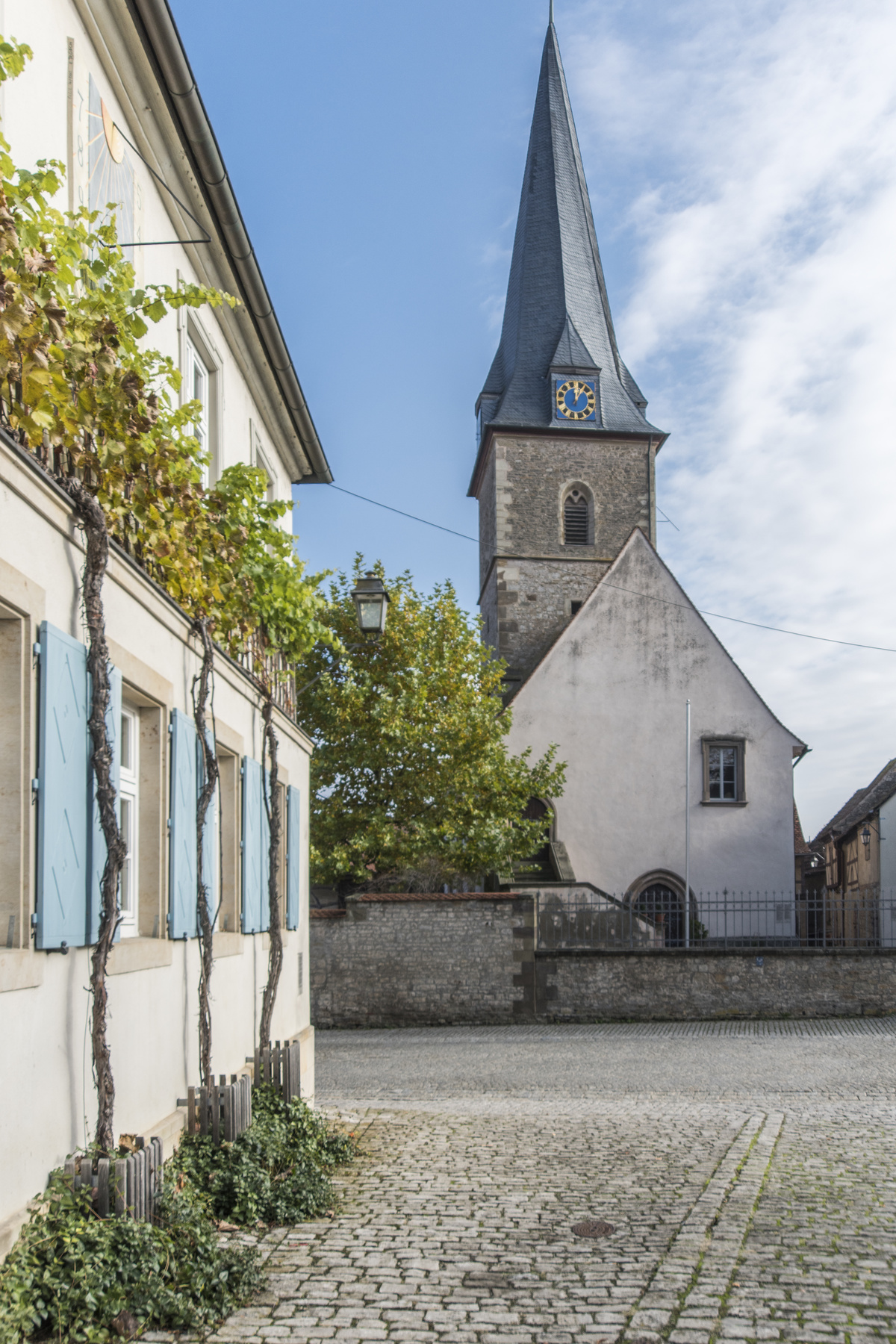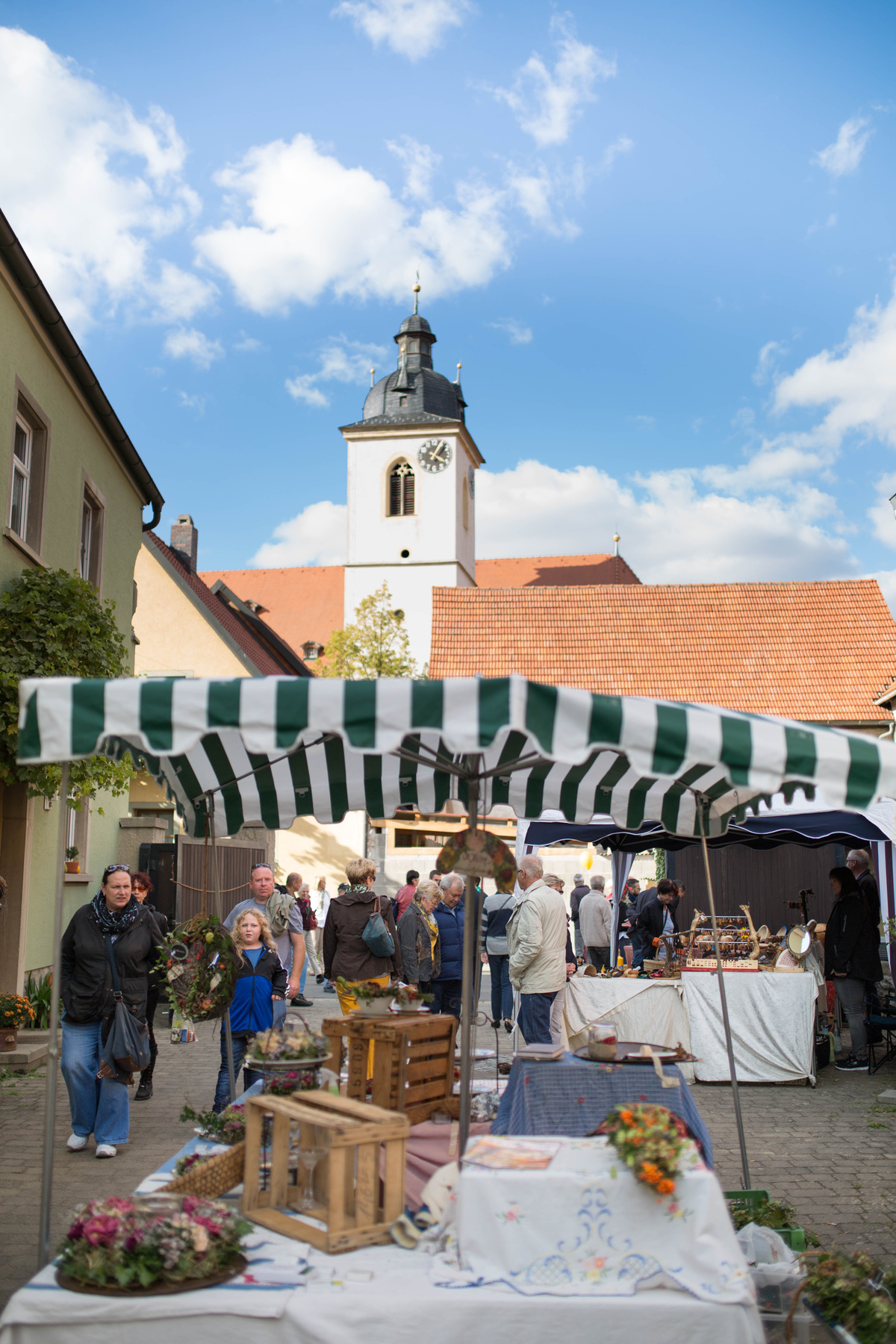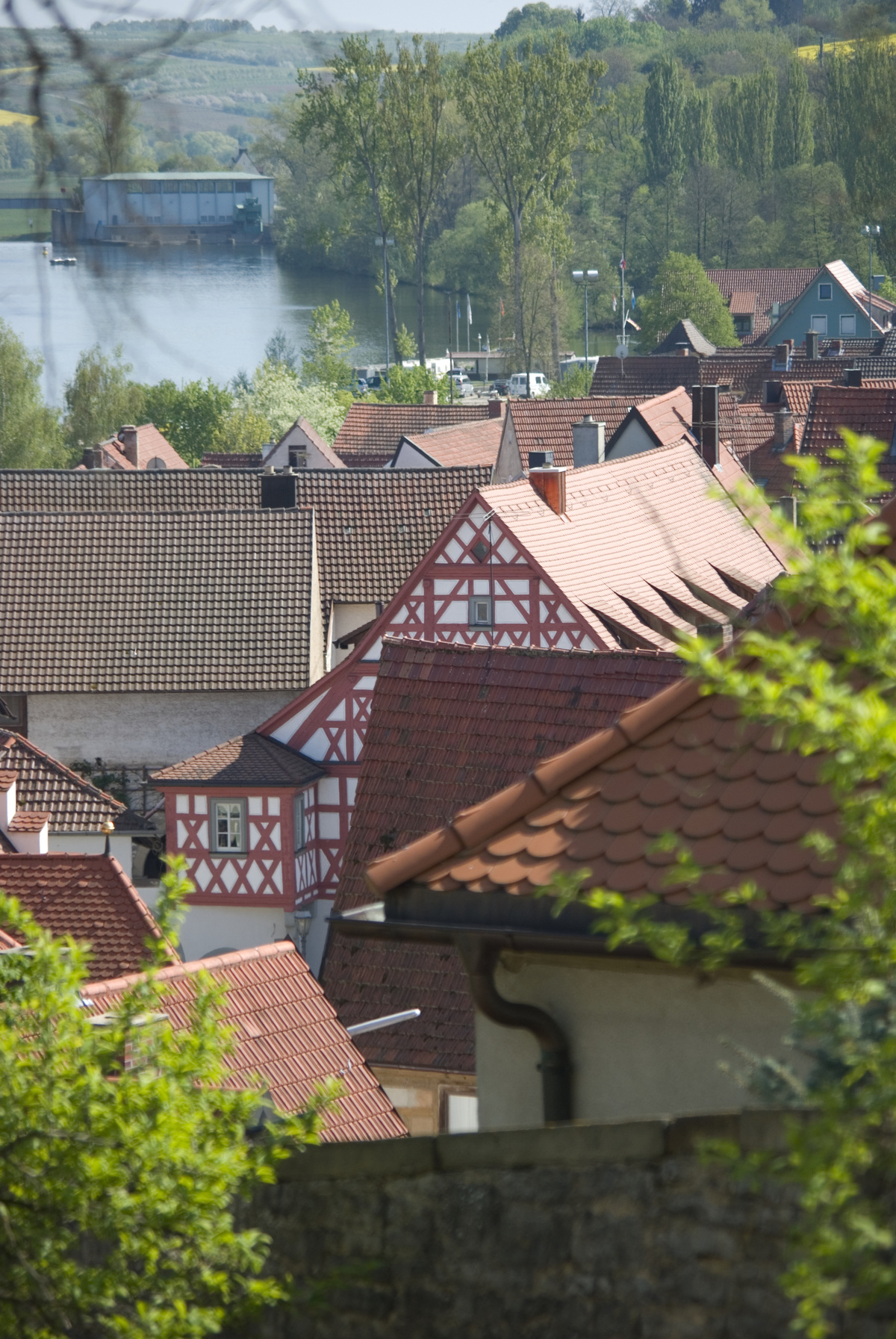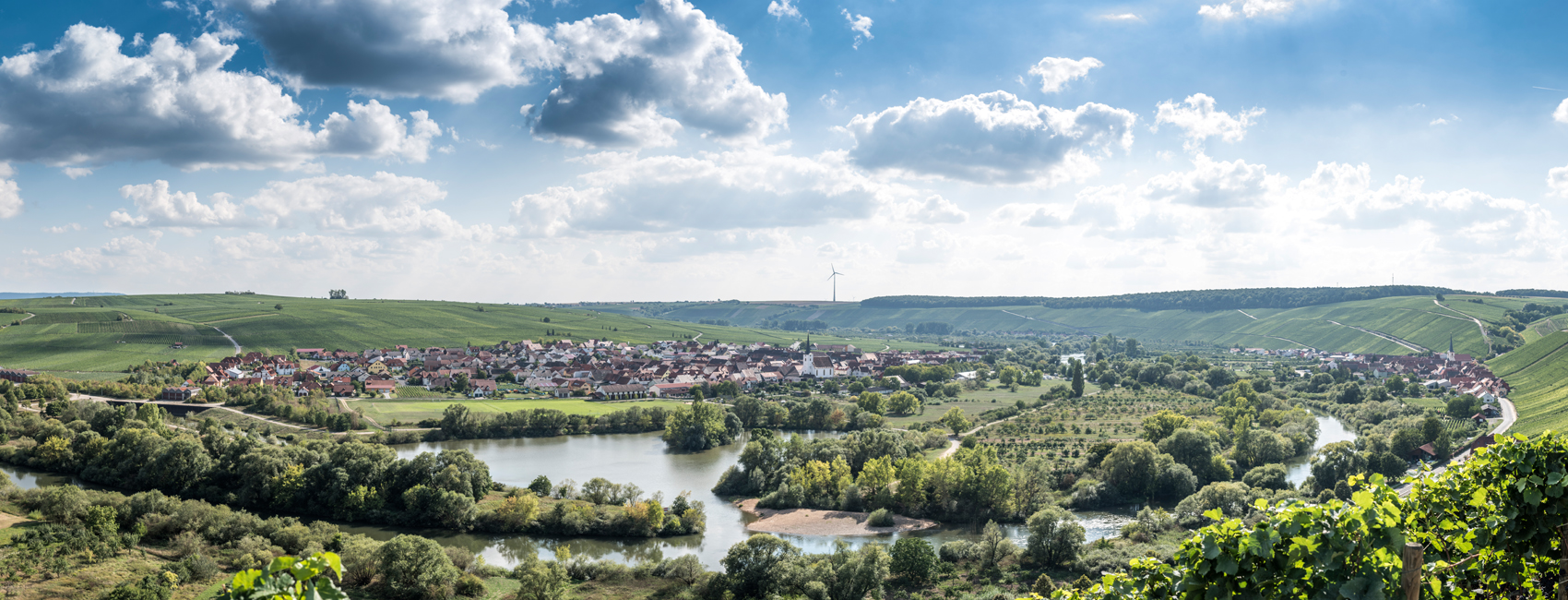
-
 The Main River Loop
The Main River Loop
-
 Communities in the Main River Loop
Communities in the Main River Loop
Communities in the Main River Loop
Click on the name of one of the locations for more detailed information.
Nordheim (around 1000 inhabitants)
Member community of the Volkach municipality
Facts & figures
- First documented by Benedictine monks of Münsterschwarzach in 918.
- The Benedictines reinforced their hold over the village in 1306.
- In 1803, the church holdings fell to the state due to secularisation.
- In terms of area, Nordheim is the largest wine-growing parish in Franconia.
Wine-growing
- "Nordheimer Vögelein" (250 ha)
- "Nordheimer Kreuzberg" (170 ha)
Destinations
- Parish church with Gothic choir spire (around 1600)
- Mariensäule (Sculpture of the Virgin) (late Rococo, dating back to 1775)
- Former "Zehnthof" (tithe barn) of the Münsterschwarzach Monastery (around 1600)
with chapel
Tour options
"Zehnthof" Chapel is accessible only at specific times. Opening times can be requested from the DIVINO Vineyard Cooperative (Winzergenossenschaft DIVINO)
Excursion options
- Hills offering panoramic views of the vineyards
- Educational "Nordheim Wine" trail
- Main River ferry to Escherndorf
- Wine island beach at the Main River ferryport
Sommerach (around 1500 inhabitants)
Member community of the Volkach municipality
Facts & Figures
- First documented by Benedictine monks of Münsterschwarzach in 1084.
- Owned by the Earls of Castell at the beginning of the 12th century.
- The Peasants' War and later Thirty Years' War took their toll on the village. Ever-changing ownership of the village finally stabilised in the 17th century.
Public figures
Johann Georg Pickel (1783-1836), Medical Consultant and Full Professor of Chemistry and Pharmacy at Würzburg University was born and raised here.
Destinations
- Ruins of the old ramparts dating back to around 1500
- "Main River Gate" (1585), used today as the tower museum for artist Theo Steinbrenner
- Late Gothic parish church St. Eucherius (1560) wit typical "Echter" spire
- Former "Zehnthof" (tithe barn) of the Münsterschwarzach Monastery (around 1700)
- Townhall, constructed between 1661 and 1664, extended in 1827, completely refurbished in 2000
- Quadruple-pipe fountain featuring a sculpture of St. George (1701)
- "Graue Marter" and "Viersäulenmarter" shrines
Excursion options
- Look-out tower offering panoramic views of the vineyards
- Gate Tower Museum
- Oldest Winegrowers Cooperative in Franconia (founded in 1901)
- InfoVinothek at the townhall
Wine-growing
"Sommeracher Katzenkopf" (180 ha), "Sommeracher Rosenberg" (60 ha) "Sommeracher Engelsberg" (30 ha)
Stammheim (around 860 inhabitants)
Part of the Kolitzheim community
Facts & Figures
The history of the hamlet can be traced back to the 6th century. First historical documentation in 1136.
Wine-growing
"Stammheimer Eselsberg" (130 ha)
Destinations
Parish church St. Bartholomew (around 1500) and half-timbered townhall (1604)
Excursion options
- Contemporary History Museum
- Largest accessible "Bocksbeutel" (wine bottle) installation in the vineyards
- Signposted hiking and Nordic Walking trails
Lindach (around 510 inhabitants)
Part of the Kolitzheim community
Facts & figures
First historical documentation in 1091
Wine-growing
"Lindacher Kreuzpfad" (15 ha)
Destinations
- Parish church St. Antonius and the chapel "Lindacher Käppele"
- Historical townhall with extensive half-timbering
Excursion options
Lindach "Landscape Experience" trail (5 km) and Nordic-Walking trails
Zeilitzheim (around 730 inhabitants)
Part of the Kolitzheim community
Facts & figures
First officially documented in the 13th century
Wine-growing
"Zeilitzheimer Heiligenberg" (36 ha)
Destinations
- Gothic parish church (protestant) St. Sigismund (1451)
- Parish church St. Trinity (cath.) dated 1978
- Castle with "Schönborn" Hall (constructed 1679-83, furnished in 1737)
- Historical townhall (constructed in 1696, refurbished 1990-93)
Excursion options
- Church "Gaden" (annexes) and historical hiking trail around the village
- Vineyard cabin and Nordic Walking trails
Obereisenheim (around 600 inhabitants)
District of Markt Eisenheim
Facts & figures
- First historical documentation in 788
- Breakaway from Untereisenheim in the 15th century
- First "Silvaner" grapes are sold to Castell in 1659
- Part of Markt Eisenheim since the Territorial Reform of 1978
Destinations
Parish church (1496) with Rococo décor and half-timbered houses
Excursion options
- "Silvaner" vine hike and wayside shrine trail
- "Ore Mountain Toy Corner" (Erzgebirgischer Spielzeugwinkel)
- Museum and Main River ferry
Wine-growing
"Obereisenheimer Höll" (120 ha)
Untereisenheim (around 600 inhabitants)
District of Markt Eisenheim
Facts & figures
- First historical documentation in 788
- Since the Territorial Reform of 1978 district of Markt Eisenheim
Destinations
- Parish church "Maria Himmelfahrt" (Ascension of Virgin Mary) with 15th century spire
- Ruins of the old market ramparts
- "Hundertwasser"-style vineyard
Wine-growing
"Untereisenheimer Sonnenberg" (110 ha)
Wipfeld (around 1100 inhabitants)
Facts & figures
First historical documentation in 918
Public figures
Famous local born public figures:
- Humanist Conrad Celtis (1459)
- Franciscan monk and professor Eulogius Schneider (1756)
- Professor of Theology Engelbert Klüpfel (1733)
Wine-growing
"Wipfelder Zehntgraf" (100 ha)
Destinations
- Parish church with spire (1599), old administrative building with stepped gables (1615)
- Townhall (1737) with external stairway
- Main River ferry Wipfeld-Stammheim

